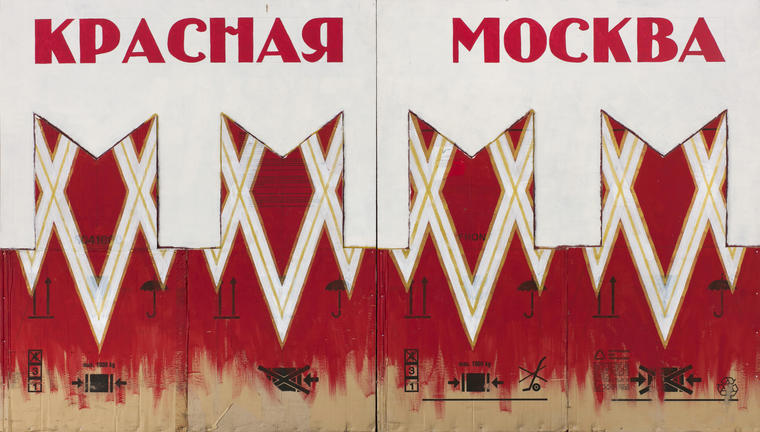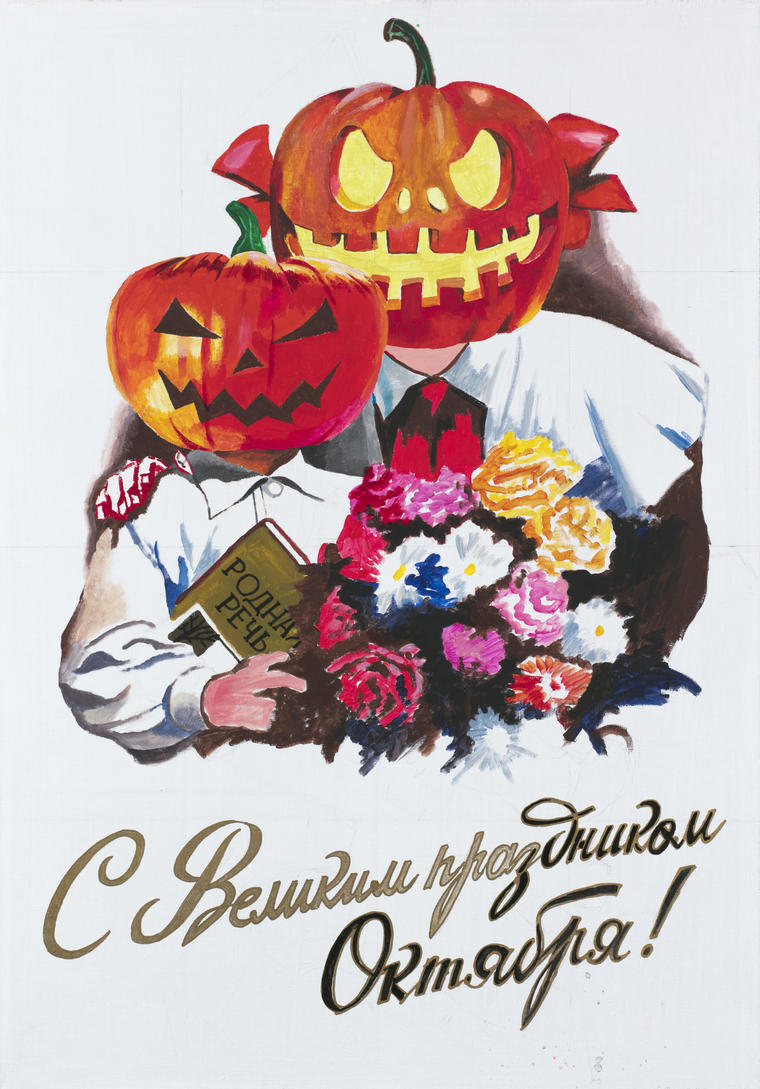
The work «Abstract Composition» by Rostislav Lebedev can be considered as the first significant creation in his work – that for the artist of such fame, one of the founders of the most important direction in the domestic art – Sots Art – of course, represents a unique precedent. This uniqueness is enhanced by the fact that the work is object-free – that is, it is completely different in style than all of his other works.
Lebedev made it at the age of 25, shortly after the graduation (1969) from the Art and Graphic Department of the Pedagogical Institute in Moscow, where he studied, among others, from the classic of socialist realism, Vasily Efanov. His interest in «formalist» solutions in his work has become decisive over the years, which was facilitated by the acquaintance and communication with a circle of artists who soon formed the core of social art – Boris Orlov, Alexander Kosolapov, Leonid Sokov and Dmitry Prigov. For Lebedev abstraction was more of a breakdown, just after the creation of this work, he realized that he would not go in this direction: «I understood that it was not for me», – as the artist himself says. Nevertheless, interest in the construction of the picture space, open color spots, linear structures are found in his subsequent works up to the mid-1970’s, when he stopped creating paintings of a plastic character and moved on to the conceptual object and the ideological deconstruction of the language.
The «Abstract composition» is depicted in an elegiac blue tonality. Lebedev himself calls such type of abstraction «metaphorical»: there is an implicit image, an exact metaphor. As suggested by the image of the lantern on the right – this is the image of some city, lyrically resolved evening urban space. It's not about a particular city, and certainly not about Moscow, it's a collective, abstract image. The colors of the evening sky thicken in the upper part of the canvas; we can guess the glare of the streetlights or the scattered light in its other places. The central spot of red, covered with red as oblique strips, looks like the roof of a house, but this association is not necessary. Spots of other colors – there are lots of them scattered – form a scattered structure, some sort of fragments of a lattice or steps. By its structure the work resembles of the canvases by Joan Miró with their «suspended» forms, whose creativity Lebedev was more fond of then than of any other modernist artists. The next works will be samples in the genres of nude, still life. But there will be nothing like this work again.
Lebedev will return to abstraction already on a new turn of his creativity, in the mid-1970’s, when he builds suprematist compositions from children's plastic cubes (these works are in the collection of the State Tretyakov Gallery). Early paintings were mostly given to friends and like-minded people, so some of them are still in the collections of Boris Orlov and the heirs of Vladimir Kupriyanov.
Sergey Popov





